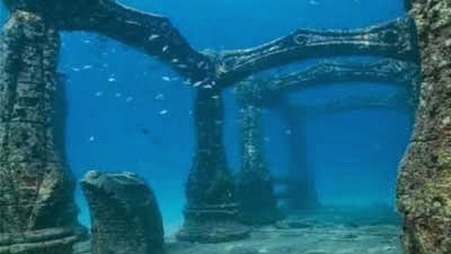
Since the early 1990s, the topographical surveys have allowed the research team led by French underwater archaeologist Franck Goddio to conquer the harbor of Alexandria. The field of vision is clearer.
"This location is a unique site in the world," said Goddio who has spent two decades trying to find the lost city.
This photo is from the exploration that took a team of divers to the palace and temple complex of Isis. This is a central and essential part of the palace compound. The goddess Isis was special to Cleopatra. Isis was the goddess of magic and power.
Cleopatra is reputed to have been schooled in the mysteries of Isis and Osiris, and the priests of these gods were very powerful. They were thought to have means of magic, telepathy and clairvoyance, which legend says were taught to the young princess from her youth.
It is in this temple, in a small room known as "The Sphere of Destiny," that Cleopatra was supposed to have kept a large quartz block. It had a smooth polished surface about the size of two hands on one of the upper faces of the stone.
It was by scrying into that dark mirror that Cleopatra was supposed to be able to see the past and future, communicate with her generals and even it was said, she was to first see the face of Mark Antony.
This stone of power was called the "Eye of Cleopatra," or "Cleopatra's Eye" and was rumored to be as old as Egypt itself. After the death of Cleopatra and Antony, the stone disappeared never to be seen again. Could it still be buried somewhere here beneath the bay?
It was in the Temple of Isis where Cleopatra's love affair with the Roman general Antony took place--his rooms were there. The pair allegedly committed suicide following the defeat by his former ally Octavian. Octavian then appeared with the name of the Roman Emperor Augustus.
Teams of divers find a central place in the life of Cleopatra and Antony, the dramatic pair whose love was so famous, including the Timonium where Antony withdrew from the outside world after the defeat of Octavian by Brutus in the Civil War. The building has not been completed because Antony committed suicide.
They also found a large head-shaped stone monument, which is strongly suspected as that of Caesarion, son of Cleopatra and her lover before Antony, Julius Caesar. The team also found two sphinxes that one of them is probably the picture of Cleopatra 's father , Ptolemy XII .
Discovery in the waters of Alexandria will be on display at the Franklin Institute, Philadelphia , United States ( U.S. ) from June 5 to January 2, 2010 in the exhibition titled "Cleopatra : The Search for the Last Queen of Egypt ". Exhibition will then continue to other cities in North America.
"This location is a unique site in the world," said Goddio who has spent two decades trying to find the lost city.
This photo is from the exploration that took a team of divers to the palace and temple complex of Isis. This is a central and essential part of the palace compound. The goddess Isis was special to Cleopatra. Isis was the goddess of magic and power.
Cleopatra is reputed to have been schooled in the mysteries of Isis and Osiris, and the priests of these gods were very powerful. They were thought to have means of magic, telepathy and clairvoyance, which legend says were taught to the young princess from her youth.
It is in this temple, in a small room known as "The Sphere of Destiny," that Cleopatra was supposed to have kept a large quartz block. It had a smooth polished surface about the size of two hands on one of the upper faces of the stone.
It was by scrying into that dark mirror that Cleopatra was supposed to be able to see the past and future, communicate with her generals and even it was said, she was to first see the face of Mark Antony.
This stone of power was called the "Eye of Cleopatra," or "Cleopatra's Eye" and was rumored to be as old as Egypt itself. After the death of Cleopatra and Antony, the stone disappeared never to be seen again. Could it still be buried somewhere here beneath the bay?
It was in the Temple of Isis where Cleopatra's love affair with the Roman general Antony took place--his rooms were there. The pair allegedly committed suicide following the defeat by his former ally Octavian. Octavian then appeared with the name of the Roman Emperor Augustus.
Teams of divers find a central place in the life of Cleopatra and Antony, the dramatic pair whose love was so famous, including the Timonium where Antony withdrew from the outside world after the defeat of Octavian by Brutus in the Civil War. The building has not been completed because Antony committed suicide.
They also found a large head-shaped stone monument, which is strongly suspected as that of Caesarion, son of Cleopatra and her lover before Antony, Julius Caesar. The team also found two sphinxes that one of them is probably the picture of Cleopatra 's father , Ptolemy XII .
Discovery in the waters of Alexandria will be on display at the Franklin Institute, Philadelphia , United States ( U.S. ) from June 5 to January 2, 2010 in the exhibition titled "Cleopatra : The Search for the Last Queen of Egypt ". Exhibition will then continue to other cities in North America.
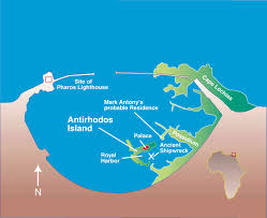
This is a map of the Palace of Cleopatra excavations. Mark Anthony's rooms are marked. The Temple of Isis, where Cleopatra's sanctum and Mark Antony's rooms were located was a sumptuous and lavish compound that was more of a palace of its own than a cultic shrine.
Much has been made of the last days of Cleopatra's rule, but in fact, the complex is revealing of her whole reign and her industrious and brilliant architectural, military and artistic knowledge. Her brain and wit were more important to her success than her beauty. She seemed to have knowledge and resources way beyond that of those she dealt with, and the scribes of the day attributed this to her deep Egyptian magic.
Much has been made of the last days of Cleopatra's rule, but in fact, the complex is revealing of her whole reign and her industrious and brilliant architectural, military and artistic knowledge. Her brain and wit were more important to her success than her beauty. She seemed to have knowledge and resources way beyond that of those she dealt with, and the scribes of the day attributed this to her deep Egyptian magic.
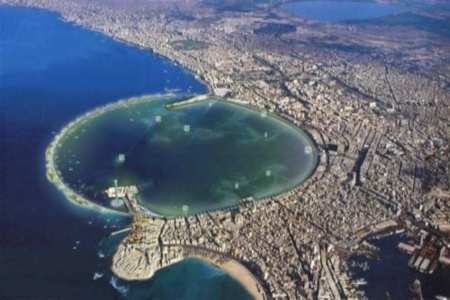
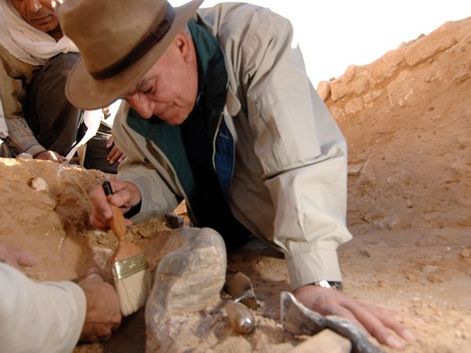
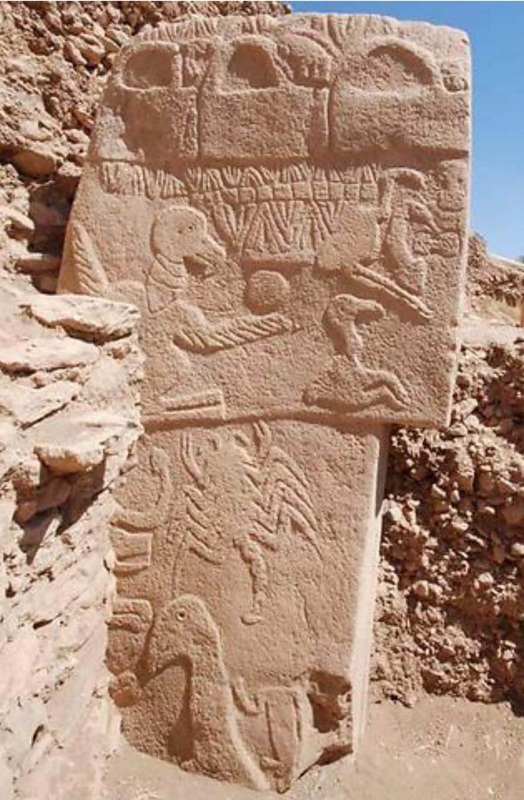
 RSS Feed
RSS Feed